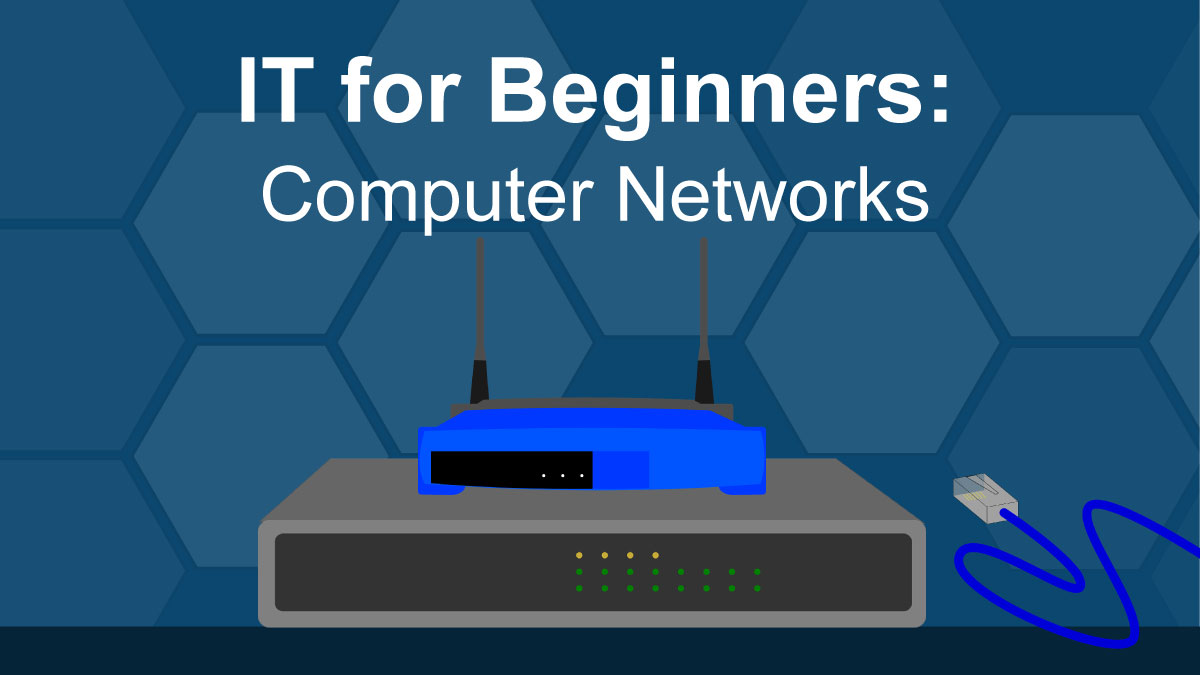Following on from our previous post about the differences between workstations and servers, we’ll now move on to the hardware that makes it possible for workstations, servers, and mobile devices to talk to each other – network hardware.
Computer networks, also variously termed IT networks, infrastructure, network systems, or just networks, are composed of a wide variety of hardware devices, cabling, and software. A typical office network consists of a various bits of cabling, physically connecting desktop computers and servers to a network hub or switch, which in turn is connected to a router that connects the whole thing to the internet via your Internet Service Provider (ISP). The router or network switch may also have wireless network capability, allowing mobile devices to also be connected to the network.
So what are all of these devices, and what do they do?
Let’s go through them all individually.
Network Cabling
Aside from your wireless devices, your cabling is pretty much what connects your office network together. It comes in a variety of types, but here we’ll just outline a few of the most common.
Twisted Pair
This type of cabling, also known as Category 5, Ethernet, and patch cable, is what connects most office computers to their networks.
Fiber
For faster networks, this forms the backbone for your IT services, connecting your servers to routers, data stores, or other high-capacity devices.
Coaxial
This type of cable is what your internet services run through to get to your servers and computers, and for you to get out to the world wide web.
Hubs, Switches, Routers, Bridges, & Repeaters
These devices give the functionality to the network, acting like an old fashioned switchboard to make sure all of the information from your various computers gets to where it supposed to go.
Hubs
The simplest network device, a hub allows you to connect a number of computers and printers together to form a simple network. By itself, a hub has no intelligence, management, or functionality, other than connecting devices together. Good for small offices with low data loads.
Switches
Switches are similar to hubs, but are more complex, are capable of being chained together, able to handle much higher loads than hubs, and can handle a great number of computers and devices. Switches can be either managed or unmanaged; unmanaged switches are capable of managing significant load by themselves, whereas managed also have the capability of being managed by a systems manager via a control interface.
Routers
We are all familiar with routers. We all have them in our homes, bringing the internet into our lives. But in business networks, they can be much more than that, and can form vital connectivity between networks and groups of networks. Routes can also be equipped with WiFi capability, as well as having Ethernet, fiber, and coax interfaces.
Bridges
Similar in many ways to routers, bridges connect two networks together in a simple and organized manner.
Repeaters
Repeaters act to boost the signals in a wired network, so that users at the extreme ends of the network don’t lose signal and therefore connectivity.
Wireless Networks
WiFi Routers
WiFi routers are commonplace everywhere these days, and the office is no exception. They provide connectivity for our mobile phones, laptops, tablets, computers, printers, and more. Most often, WiFi networks are setup securely, with an open channel for guest usage.
WiFi Extenders
WiFi extenders do the same job as repeaters in a wired network. the work to extend the range of the wireless network, sometimes to great distance.
Network Software and data transfer
Management Software and Hardware Interfaces
Computer networks themselves don’t generally need software in order to work. They can be largely plug-and-play since the instructions for them to work are embedded in the device itself as Firmware or some other kind of middle-ware. However, in some case, particularly in the case of larger organizations, interfaces are used, both on the network devices themselves, or on administrative computers, so that support staff can monitor, manage, and troubleshoot their networks.
The Role of Networking Protocols
Network protocols are the language of computer networks. You may have heard of IP addresses, TCP/IP, HTTP, SSL, or other types of addressing protocol. they all form part of the standard networking framework that allows all manner of devices to talk to each other, regardless of manufacturer, language, or location. This topic is beyond the scope of this post, but we’ll discuss protocols again in a later post.
For more info on computer networks, talk to TechPoint.

